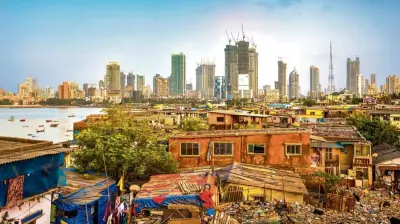
Bangalore's beloved Cubbon Park, the sprawling 300-acre green oasis in the city's heart, stands at a crucial environmental crossroads. The recent proposal to relocate the Karnataka High Court from its current premises within the park has ignited hopes for an ecological renaissance that could restore this urban sanctuary to its former glory.
The Concrete Intrusion in Bangalore's Green Lung
For decades, the High Court complex has represented a significant concrete footprint within Cubbon Park's natural landscape. The presence of this judicial institution has brought with it substantial vehicular traffic, noise pollution, and infrastructure development that have collectively chipped away at the park's ecological integrity. What was originally conceived as a pure green space has gradually transformed into a hybrid zone where nature coexists uncomfortably with administrative function.
A Vision for Pedestrian Paradise
The potential relocation opens up transformative possibilities for Cubbon Park's future. Environmental advocates envision a restored park where:
- Vehicular traffic is significantly reduced or eliminated entirely
- Pedestrian pathways and cycling tracks replace parking lots
- Native biodiversity receives protected corridors to flourish
- Cultural and recreational spaces enhance public enjoyment
- Historical structures are preserved while modern intrusions are removed
Ecological Benefits Beyond Aesthetics
This isn't merely about cosmetic improvements. The restoration of Cubbon Park carries profound environmental implications for India's Silicon Valley. As Bangalore grapples with declining green cover and rising urban temperatures, a fully restored park could:
- Serve as a crucial carbon sink for the city center
- Provide enhanced habitats for urban wildlife and bird species
- Improve air quality in one of the most congested urban corridors
- Reduce the urban heat island effect through increased vegetation
- Offer improved groundwater recharge capabilities
Balancing Heritage with Modern Needs
The challenge lies in executing this vision while respecting the park's historical significance and the functional requirements of a growing metropolis. The relocation process must be carefully planned to ensure that the High Court's new facilities adequately serve the public while the vacated space is thoughtfully reintegrated into the park's ecosystem.
The transformation of Cubbon Park represents more than just an urban development project—it symbolizes Bangalore's commitment to balancing growth with environmental stewardship. As city planners and environmentalists collaborate on this ambitious initiative, the outcome could set a precedent for how Indian cities can reclaim and rejuvenate their precious green spaces.
This potential makeover comes at a critical time when urban Indians are increasingly recognizing the value of accessible natural spaces for physical health, mental wellbeing, and community cohesion. The revival of Cubbon Park could become a model for similar initiatives across the country, demonstrating that with vision and political will, even long-compromised urban ecosystems can be restored to their full potential.





